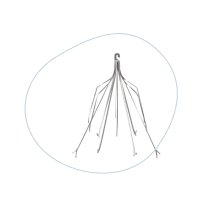Diagnosed With DVT, We can Help.

- Free DVT screening, result analysis and treatment plan.
- Latest DVT treatments available
- No Insurance - No Problem.
- Affordable Weekly Payment Options
- Highly experienced Board Certified Doctor and nurses

Even though DVT itself is not life-threatening, the blood clots have the potential to break free and travel through your bloodstream. A pulmonary embolism (PE) happens when the traveling blood clots (emboli) become lodged in the blood vessels of your lung. Since this can be a life-threatening condition, you need a quick diagnosis and treatment.
Symptoms of DVT?

The symptoms associated with an acute DVT include:
- Swelling of your leg or arm (sometimes this happens suddenly).
- Pain or tenderness in your leg or arm (may only happen when standing or walking).
- The area of your leg or arm that’s swollen or hurts may be warmer than usual.
- Skin that’s red or discolored.
- The veins near your skin’s surface may be larger than normal.
- Abdominal pain or flank pain (when blood clots affect the veins deep inside your abdomen).
- Severe headache (usually of sudden onset) and/or seizures (when blood clots affect the veins of your brain).
Some people don’t know they have a DVT until the clot moves from their leg or arm and travels to their lung. Symptoms of acute PE include chest pain, shortness of breath, cough with blood, lightheadedness and fainting.


Anticoagulants
(blood thinners)
This type of medication makes it harder for your blood to clot. Anticoagulants also stop clots from getting bigger and prevent blood clots from moving.

Compression
Stockings
You‘ll probably need to wear graded elastic compression stockings to either improve or completely get rid of leg swelling. Damage to the small valves inside your veins often causes this swelling.

IVC
Filter
Our surgeon inserts the IVC filter into your inferior vena cava, a large vein in your abdomen. If blood clots in the veins of your legs break off and travel, the IVC filter is designed to prevent large blood clots (emboli) from reaching your lungs and causing a pulmonary embolism.

Mechanical
Thrombectomy
Mechanical thrombectomy devices are designed to help break up and physically remove all or portions of the blood clot. These devices are designed to remove extensive clots more efficiently, provide quicker restoration of venous flow and assist in restoring normal venous valve function.
at One of Our 3 Vein Clinic Locations
in Oviedo, Winter Haven, Ocoee

- A quick FREE 15-minute consultation at our office to help determine if your DVT problems are present.
- Pulses in your legs and feet to determine if there is enough blood flowing to these areas.
- The color, temperature, and appearance of your legs and feet.
- Signs of poor wound healing on the legs and feet.
- A doctor or nurse practitioner will meet with you to discuss the DVT screening results answering any questions you may have.
- After your meeting, we will have insurance specialists on hand that can answer questions about insurance coverage and any requirements that insurance may have you meet before treatment.
- If you do not have insurance, the insurance specialist can also go over self-pay options with you.


Holistic
Approach

Dedicated and
Caring Team

Affordable
Pricing Packages

State of the
Art Facility
Our full range of medical, laser & surgical options, include the latest diagnostic equipment for providing the highest possible vascular care.
Meet Dr. Obinna Nwobi

He then earned a master’s degree in public health from Johns Hopkins Bloomberg School of Public Health in Maryland, focusing on health care management and international health. He went on to earn his medical degree from the University of Tennessee College of Medicine. Dr. Nwobi completed his internship and residency in general surgery at the University of Medicine and Dentistry of New Jersey.
After completing his fellowship in vascular surgery at the Vascular Group PLLC and Albany Medical Center in New York, Dr. Nwobi chose to practice medicine in an underserved area of Florida.
Throughout his career, Dr. Nwobi has helped patients through the Indian Health Services system and Veterans A airs Hospital, while continuing to work at several large private and public hospitals.Dr. Nwobi is a Registered Physician in Vascular Interpretation, which provides him with specialized training in reading and interpreting all types of vascular ultrasounds. He is also board certified in vascular surgery. As a physician who’s passionate about serving the underserved, Dr. Nwobi dedicates as much time as possible to medical missions.
He has helped countless patients in Nigeria and provided medical care for patients who cannot a ord treatment. Because Dr. Nwobi is genuinely passionate about patient care and has extensive expertise in the most complex vascular conditions, he is trusted throughout Central Florida.

Dr. Obinna Nwobi
- Injuries from an accident
- Prior history of DVT
- Family history of DVT
- Having a central venous catheter
- Cancer
- Being overweight
- Taking birth control pills or hormone therapy
- Pregnancy
- Smoking
- Swelling of the leg
- Pain or tenderness in the leg
- Increased warmth in the area of the leg that is swollen or painful
- Red or discolored skin in the area of the leg that is swollen or painful
- Chest pain when taking in a deep breath
- Shortness of breath
- A sensation of your heart beating fast
- Fever
- Cough
- Frequent ambulation and simple leg exercises to help keep blood moving.
- Medications such as blood thinners. Some patients may be at high risk for using blood thinners. If so, compression stockings and / or a compression sleeve / pump will be placed on the patient’s legs or feet to help squeeze blood out and prevent clots from forming.
- Mechanical devices such as a compression pump. It is important for the patient to keep the compression sleeve / pump on at all times, except when walking.
Treatment of DVT includes blood thinners, to prevent the blood clot from progressing and dislodging to the lungs. These medications are taken for at least three to six months. Frequent blood tests are required so that your doctor can evaluate how well the blood thinners are working, and to determine if the dose of your medicine needs to be adjusted.
In addition, special stocking called "compression stockings" may be used to help prevent further clotting and reduce the pain and swelling that can happen with deep vein thrombosis.
In some cases, Dr Nwobi will recommend placement of a vena cava filter to prevent embolisms from traveling to the lungs. This device is generally used for patients who cannot take blood thinners, are at high risk for embolism, or have recurrence of deep vein thrombosis. Certain patients may have the option of filter removal once risk of pulmonary embolism no longer exists.
For some patients, removal of the blood clot may be offered. This is done by a minimally invasive procedure using special catheters with medication to break down and remove the clot. Removal of blood clots is usually performed on younger, active patients to prevent long-term complications such as chronic leg pain, swelling, and leg ulcers.
Oviedo
-
1410 West Broadway Ste 105
Oviedo, FL 32765 - 877-817-8346
Winter Haven
- 1121 1st Street S, Winter Haven, FL 33880
- 877-817-8346
Ocoee
- 572 Ocoee Commerce Pkw, Ocoee, FL 34761
- 877-817-8346
